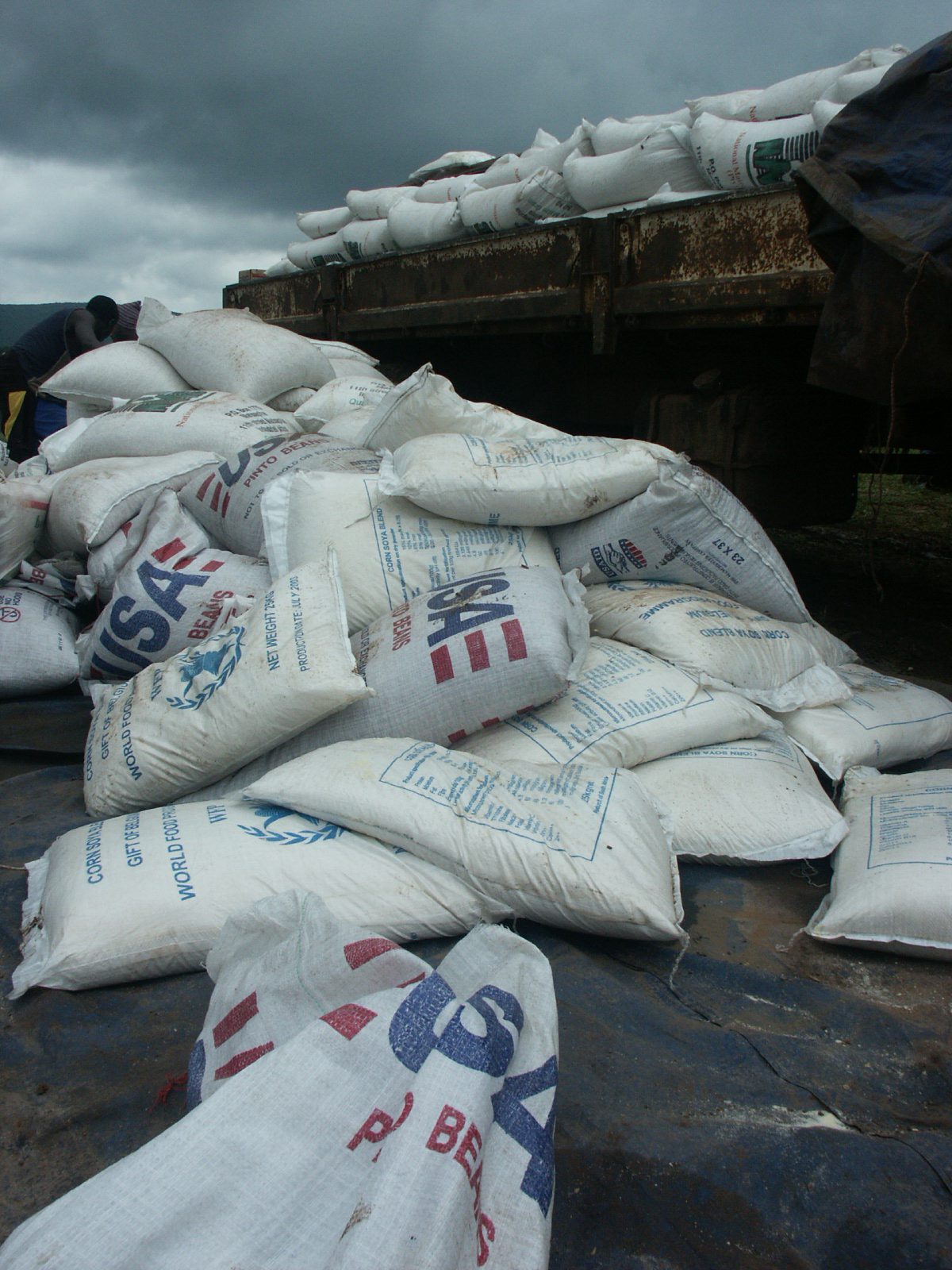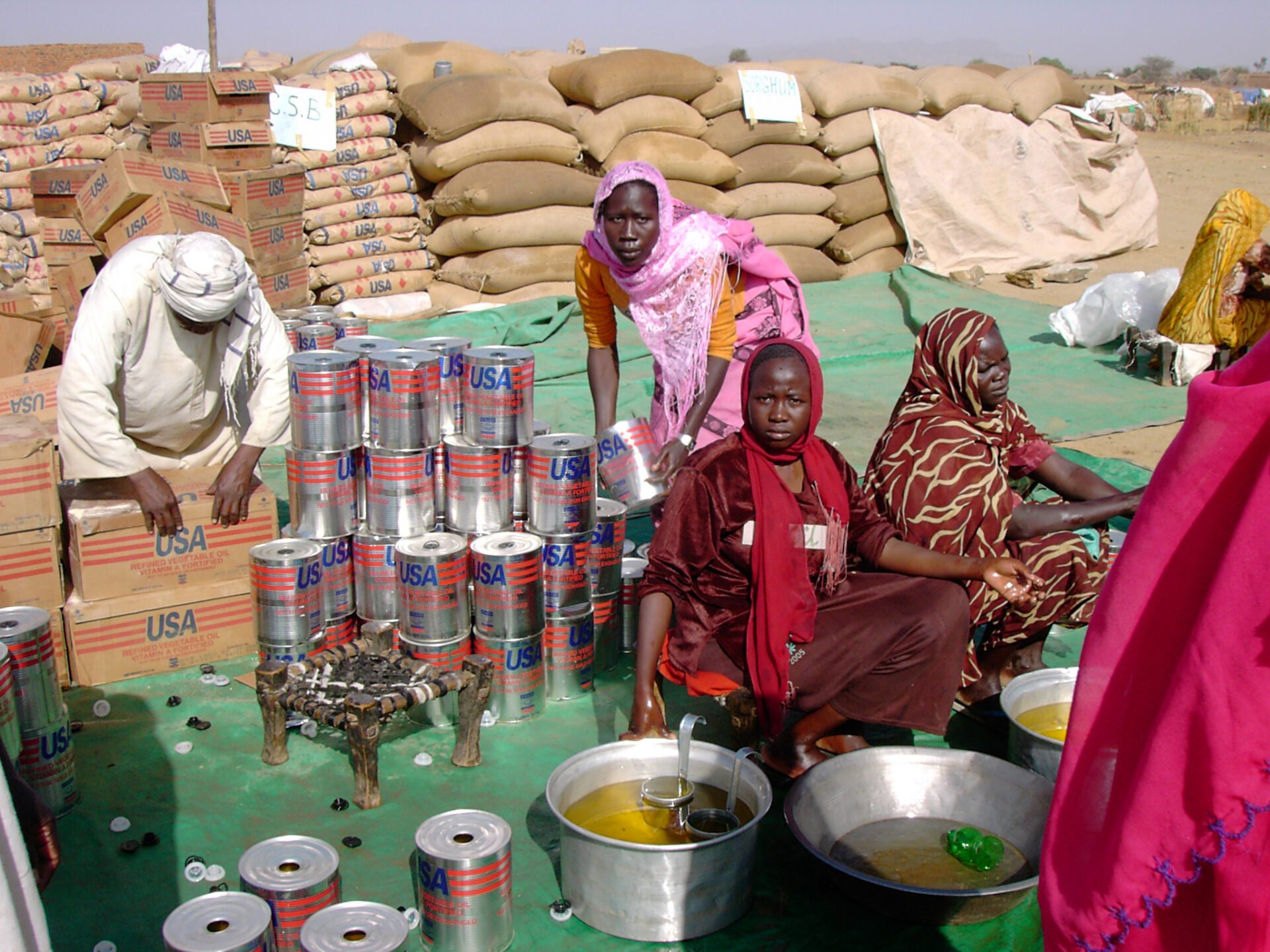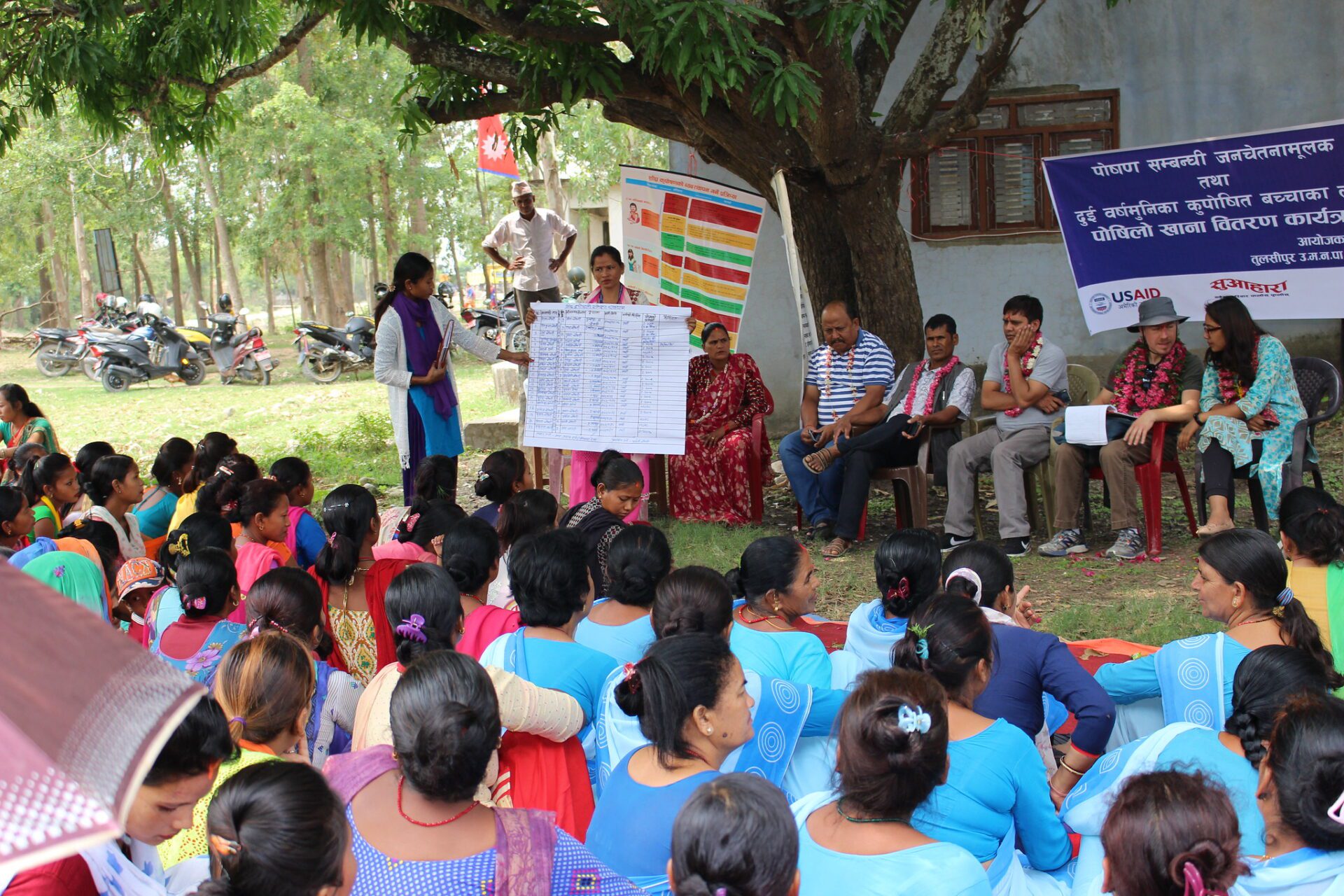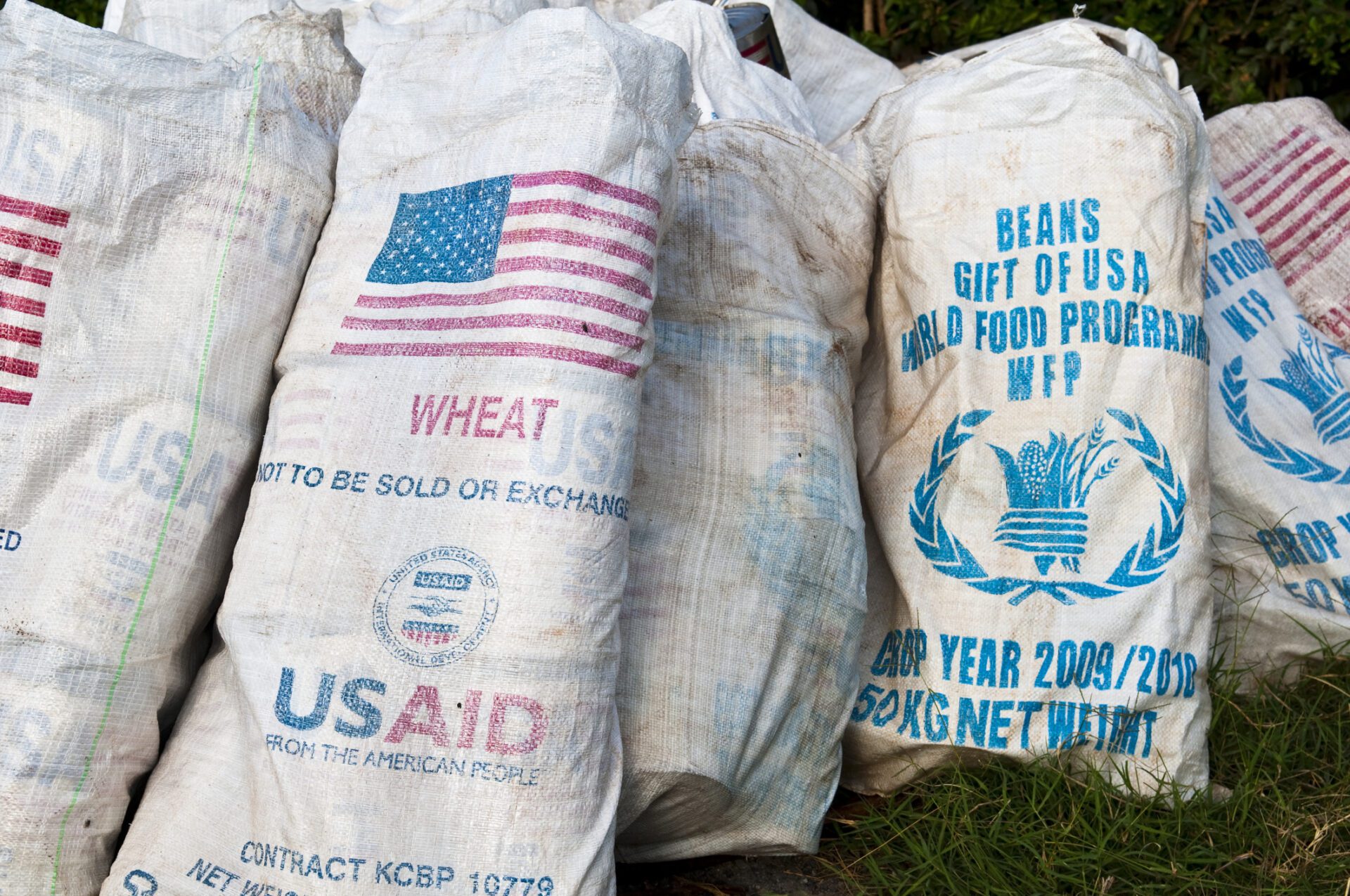This month, America’s flagship food aid program, Food for Peace, celebrates its 70th anniversary. From then to now, the program has provided more than 4 billion people in 150 countries with food.
For the past 30 years, evidence of Food for Peace’s impact has been a frequent sight to me in my travels around the world.
The genesis of Food for Peace was with President Dwight Eisenhower in the years after World War II, to make use of vast American agricultural food surpluses, create new markets for agricultural products, and provide countries with starving populations with humanitarian aid. In the 1960s the program’s focus shifted to use food to foster economic development and U.S. foreign policy in the face of world hunger.

In 2024, U.S. agricultural products are still shipped around the world to address hunger emergencies. For example, when widespread drought develops, it can be hard to find food across whole regions – and America sends food. USAID reports that last year, they purchased 1.1 million metric tons of food from U.S. farmers and ranchers to help more than 45 million people with emergency aid and acute nutrition assistance in 35 countries. Over the past decade, these commodities have come from American farmers in more than 21 U.S. states.
What a partnership between American farmers and people around the world, to connect across thousands of miles and vast oceans to provide one of the most fundamental needs.
I am proud that Bread for the World has been a supporter of Food for Peace for decades.
I hope that you are, too.
Ten years ago, Bread and its members, in coalition and partnership with other organizations, helped update Food for Peace to make it more flexible and more nutritious. The Food for Peace Act authorizes food aid as both disaster response and longer-term development assistance. In a humanitarian response, improved nutrition in food assistance products that are either sent from the United States or purchased locally can save more lives and prevent more cases of severe malnutrition. Most of those who benefit from this intervention are young children.
With flexibility, food aid can be provided via vouchers, which helps meet basic needs of refugees and displaced people by allowing them to buy food from farmers and vendors within temporary settings. Food for Peace also works through humanitarian agencies in areas where farming, local markets, or infrastructure like roads have been disrupted—perhaps by conflict or natural disaster—and these agencies can purchase food in the same region, which allows the food to reach people living with hunger relatively quickly and build up local economies sustaining temporary populations.
These updates to food aid were broadly supported by both political parties, led in Congress by House Foreign Affairs Committee Chairman Ed Royce (R-CA), Ranking Member Eliot Engel (D-NY) and Rep. Karen Bass (D-CA). In the Wall Street Journal, White House Chief of Staff to President George W. Bush Josh Bolten and White House Chief of Staff to President Bill Clinton John Podesta together said, “If ever there was an issue on which big-hearted humanitarians and tightfisted fiscal hawks should find common purpose, food-aid reform is it. Millions around the world are counting on us.” The National Farmers Union said, “At a time of such urgent human need and budget constraint, reforms that enable us to reach more hungry people while saving taxpayer dollars … are the right choice.”

But in the last couple of years, that widespread bipartisan support for Food for Peace, and how it works, has faltered in Congress.
Last year, Bread and our partners mobilized advocacy to prevent more than $1.2 billion in proposed cuts to Food for Peace. This July, the House of Representatives Committee on Appropriations passed a Fiscal Year 2025 Agriculture Appropriations Act that would make devastating cuts to U.S. humanitarian and development assistance programs and agencies, including cuts to Food for Peace by $619 million from FY24.
Food for Peace supports U.S. farmers and people experiencing hunger around the world. It fosters economic development in countries and regions who will benefit from that investment, and it augments U.S. foreign policy and diplomacy with countries in crisis and their neighbors.
As Congress considers appropriations levels and takes up the reauthorization of the Farm Bill this year, they must support Food for Peace once again. It is important to remind Congress of the critical soft power that Food for Peace can deliver, in addition to what the program does to provide life-saving aid and increase development.
Representatives Jim Costa (D-CA) and Dusty Johnson (R-SD), along with 34 additional bipartisan members of Congress, introduced a resolution supporting the renewal of Food for Peace in the upcoming Farm Bill. Bread for the World activists are encouraged to reach out to their members of Congress to ask them to support this resolution and accompanying authorization and appropriations language.
Bread members and anti-hunger advocates around the country have been urging their members of Congress to maintain support for Food for Peace over the last two years. At our June Advocacy Summit, USAID Administrator Samatha Power and Assistant Administrator Dina Esposito reiterated the impact of Bread for the World’s continued advocacy in making a difference to ensure USAID reaches as many hungry people as possible. Your voice matters in this aim.
I want to tell you how Food for Peace works at the individual level: A few years ago, Jennetie Asheber Ali, a widow in Dendegura village in Ethiopia. Jennetie struggled to provide for herself and her three children prior to the program due to ongoing civil unrest. She supported her family with a small plot of land, an ox, and six goats. But when drought hit, she and her village were devastated. Jennetie was on the verge of selling her land to provide food for the family, when she secured food assistance from USAID’s Food for Peace program through partner Catholic Relief Services – and she was able to keep her land, keep her son in school, and save money for the future.
Another: Yemen had one of the highest rates of malnutrition in the world even before the current war began. Yet Ahmed Ali, an out of work taxi driver in Yemen’s Hodeida city, was dismayed when his two-year old daughter Lila was diagnosed with moderate acute malnutrition. Because of Food for Peace through partner the UN World Food Program, Ahmed began treating his daughter’s malnutrition right away with ready to use supplementary food. His wife noticed a difference quickly — Lila responded well to the additional nutrition, showing more energy and wanting to play like a healthy toddler.
These are two stories out of hundreds of millions.
733 million people are struggling with chronic hunger right now. Food for Peace can help.

This is not the time to cut funds for Food for Peace or impose new requirements that prevent food aid from being distributed efficiently and with the best use of taxpayer dollars. Bread for the World recognizes the tough fiscal environment that appropriators and authorizers face in the FY25 appropriations cycle, and we raise Food for Peace as a program that provides the U.S. economy increased return-on-investment while meeting urgent food security needs and building international good will, all while stabilizing nations susceptible to alternative foreign powers.
I encourage all Bread members and anti-hunger advocates to contact your member of Congress today and ask them to support Food for Peace.
Blessings,
Rev. Eugene Cho
References and further reading:
- Congressional Resolution text, July 2024, H.R. ____ Supporting Food for Peace
- USAID press release, July 2024, Recognizing 70 Years of the Food for Peace Program
- Bread for the World press release, June 28, 2024, Bread Deeply Concerned by House Humanitarian Aid Cuts
- Bread for the World article, February 2024, Food Aid Reform Saves Lives
- Bipartisan statements on food aid reform collected by the House Foreign Affairs Committee, June 2013, What They are Saying about Food Aid Reform
- About Food for Peace at the University of Kansas’ Robert J. Dole Institute of Politics, Food for Peace
- New York Times, April 22, 2007, Bush Administration Gains Support for New Approach on Food Aid
- USAID Report, Food for Peace Year in Review
- USAID website, Office of Food for Peace



